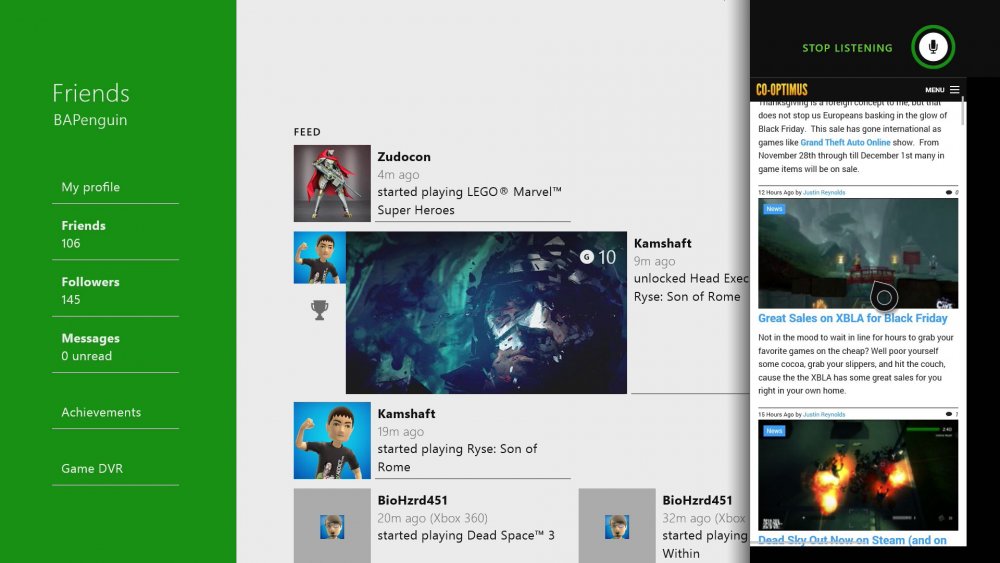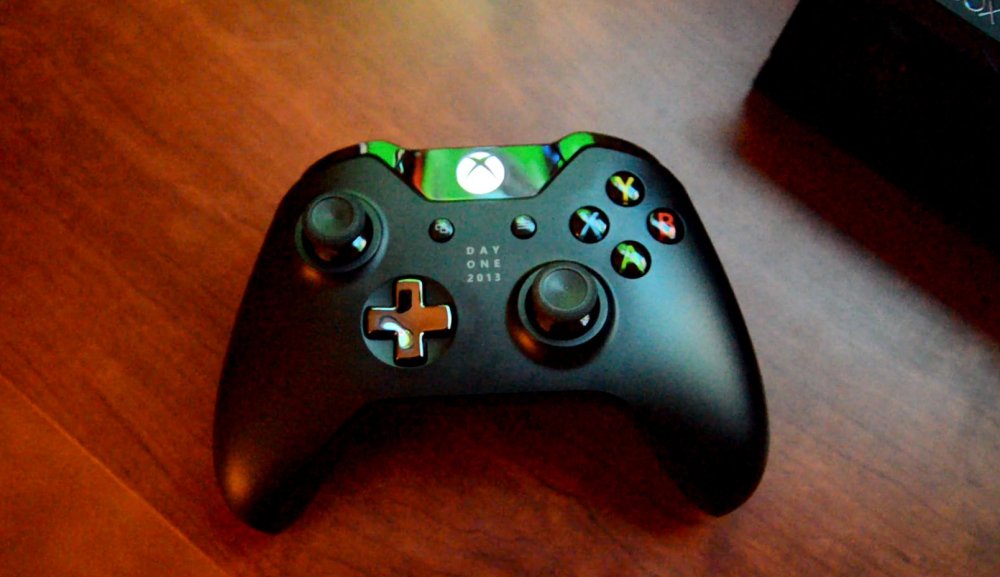Online Features

Microsoft was the dominant force in online gaming last generation. They led the pack with features like party chat, matchmaking and more. And while a lot of the features you've come to expect from Xbox are here, some are oddly missing or incomplete.
The party system is mostly the same as it was before, but there are a few weird changes. When you start a party, depending on where you are, you might not be placed in party chat right away. You also can't chat with players on the Xbox 360. The best addition is the ability to snap the chat to the right side for easy viewing of who exactly is speaking.
Matchmaking has been slightly redesigned. While it's tough to tell just how much "better" it is, Microsoft is claiming a more refined experience matching you with players you are more compatible with. It's too early in the Xbox One's life to judge this, but the few matches of Ryse: Son of Rome, Forza 5 and Dead Rising 3 I played seemed A-OK. Another benefit of the system's ability to multi-task is you can start matchmaking and head back to the dashboard and browse around a bit. Once your match is ready the Xbox One will notify you and you can jump in and connect up.
Sadly some of the better features of the Xbox 360 are missing. You can't send voice messages anymore, or right now, at least. It's unclear if that feature is coming back. You can't set notifications telling your friends that you are looking to play a specific game.
Controller

The Xbox One controller is a small refinement to an already excellent design, it's not so much an evolution as the Dual Shock 4 was for the PlayStation 4. The batteries for the device now fit seamlessly into the design, no longer protruding out. Using two standard AA batteries, I have yet to drain them in well over a week's worth of playtime; it's quite impressive.
The thumbsticks are more rigid, solid, and less slippery than before. The triggers feel good, though the bumpers' new clicky design I like slightly less. It's weird to not have a start and option button. Instead, two strange symbols adorn the controller where they'd normally be. The d-pad is a big improvement as well, though it does have a cheap plasticy feel to it.
The biggest change to the controller isn't the most obvious one. It's the inclusion of rumble into the triggers themselves. It's damn amazing. You'll feel tires slip and grip in Forza 5 or you'll feel the band of the bow as you release an arrow in Ryse. It's similar to old school PC gaming force feedback, but not as pronounced and definitely more detailed.
I like the Xbox One controller a bit more than the original Xbox 360, though I do feel at times my hands get fatigued faster.
Kinect 2.0
Microsoft is betting big on the new Kinect, making it a requirement by including it in every box. It's the reason you are paying $500 for the console. What this means is there's a big reliability on it just about everywhere. Thankfully the focus seems to have moved more to the voice recognition, and less so on motion for navigation within the interface. When it works, it's incredibly slick. But we had some pretty consistent issues with getting it to recognize basic commands.
The camera though gets used in some interesting and subtle ways. Facial recognition works well after just one "learning" session of asking who a person is. Grab a controller and you'll automatically log into that profile. This is great for couch co-op gamers and even pass the controller type games. The Kinect is even smart enough to recognize pets and such - and while they won't have their own profile, they won't ruin the recognition like the original Kinect did when my dog came into view.
Using Xbox Fitness was the best test with just how well Kinect 2.0 works. All of the advertised features come into play here - the muscle tracking, heartbeat sensing, and more all work well. The field of view of the camera is much wider, meaning you won't need as much space to have the device work, though I did have some problems going out of the field of view with floor exercises. The Kinect wants to be mounted high, not sit below the TV for optimal performance, but the larger size of it makes it tough to sit on many TVs.
If Microsoft can tweak the voice recognition to be more consistent, the Kinect might just be a risk well taken. The novelty wears off pretty quick when you need to say something three or four times just to get it to work.
Smart Glass (Second Screen)
Smart Glass is back and while it's not as cool as the game streaming Sony provides with the Vita and PS4, you probably have a device that supports Smart Glass already. The only downside I've found so far is it seems some smart glass apps require a tablet to work. For instance, while Ryse Son of Rome does work on my phone and you can see some stuff - several sections of the app are blocked off saying it requires a tablet.